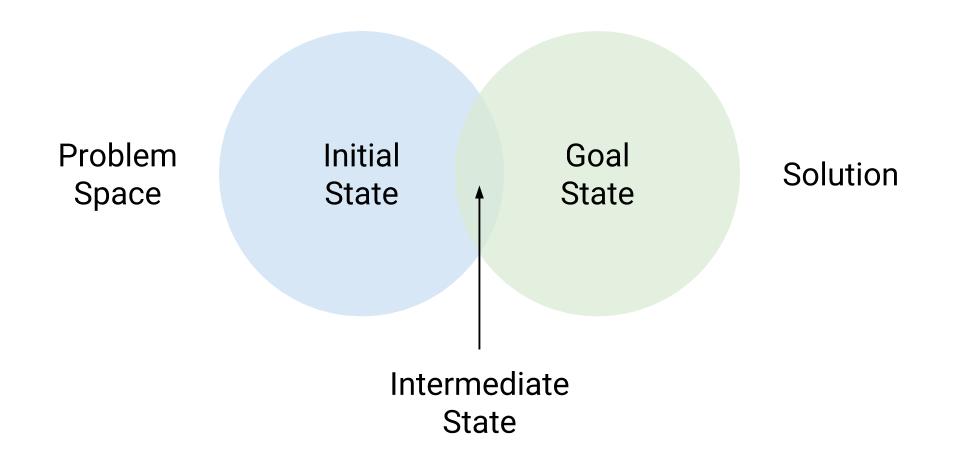Finding Solutions: The Problem Space

I'd like to talk a bit about a structured approach problem solving. Generally speaking, a problem solving approach can be divided into four steps:
- Define the question
- Explore the problem space
- Design a solution
- Challenge the solution
Every step is critical, but for this discussion I will focus on exploring the problem space. This discussion will slant towards business and technology products.

To be more concrete, this process will address answering questions such as:
- How do we build a safe, but more informative dashboard for a consumer car?
- How can we build a full featured smartphone for the blind?
- If we change our blogs commenting system to Facebook comments will our readership increase?
- How can we provide hands on training to our small business customers in a scalable way?
Exploring the problem space is ultimately about describing the state of the world today. The solution is ultimately about defining a future state of the world and how to get there.
Without knowing our starting point, we can't hope to develop our end point or a plan of how to get there. Therefore, I'd submit that understanding the problem space is equally as important as designing a solution set.
Let me take an aside to address an industry bias. There is a major bias towards solution design. Solutions are sexy and imaginative and fun to share. Solution design without a well designed problem space are also very easy. Creative solutions without consideration of real world constraints is daydreaming, that's easy. Creative solutions that overcome or break down constraints to realize a new future, that's difficult, that requires bold moves.
While creative solutions is absolutely critical, you will need to apply your business acumen, analytical thinking, and empathy to really understand a problem set and how to design bold solutions within that context.
So take those skills and apply them to defining the problem space. Start with broad strokes, I prefer a fluid brainstorming or mind map approach to exploring the problem space to start. Then, iterate to add more details and gain more understanding. Ultimately this exploration should entrench you in the world of "problems" so that you can problem solve your way to the maximal solution.
Additionally, by enumerating the variables you can categorize them, understand their constraints, and see their dependent relationships. This will allow you to better communicate. Use this information to recruit other bright minds and provide context to ask smart questions. Use this problem space information alongside your ultimate solution to garner support and justify your decisions.
While I encourage you to find the best way to orient the problem space based on your specific problem I'd like to help and provide some general categories to consider:
- The macro environment
Define the world this problem exists in. What's happening outside of "you." Are there existing solutions (competition), regulatory constraints, movements in culture, industry trends. - The company or organizational capabilities
What are your strengths and weaknesses. What is your motivation, skillset, values, perception by others. - Available or attainable resources
What kind of budget, tools, partners, people, influence do you have or can you get to address the problem. - Internal and external technology capabilities
What kind of code, systems, operations, servers, partners can be leveraged to create the solution. - Stakeholder impact
Which user cohorts, partners, sales prospects, front line employees, executives, investors will be affected by the solution. - The arrow of time
How do all the above variables vary in time. Technology becomes cheaper, markets expand or shrink, roadmaps are executed. How can a solution be roadmapped to change as the problem space changes.
As you can see, even this brief exploration surfaces a number of variables. You likely can also see that many of these factors are dependent on each other in the problem space. You may also see that these variables may change based on the solution you design.
For example, maybe you design a solution that a stakeholder with budget authority really likes. Well, that may change the value of your human resources, which may decrease your time to launch, which may put you in a different market phase, which changes the user cohort that you will affect.
It's a complex, multivariate analysis. Made all the more intricate because there are qualitative variables that will be driven by gut instinct.
In closing, the solution you design cannot stand alone. Your solution and your understanding of the problem space go hand in hand. The problem space is the state of your world today and it must be understood so that you can leverage your teams creativity and boldness to define a new world and a map between the two.
Image attribution: https://commons.wikimedia.org/wiki/File:Problemspace.jpg
